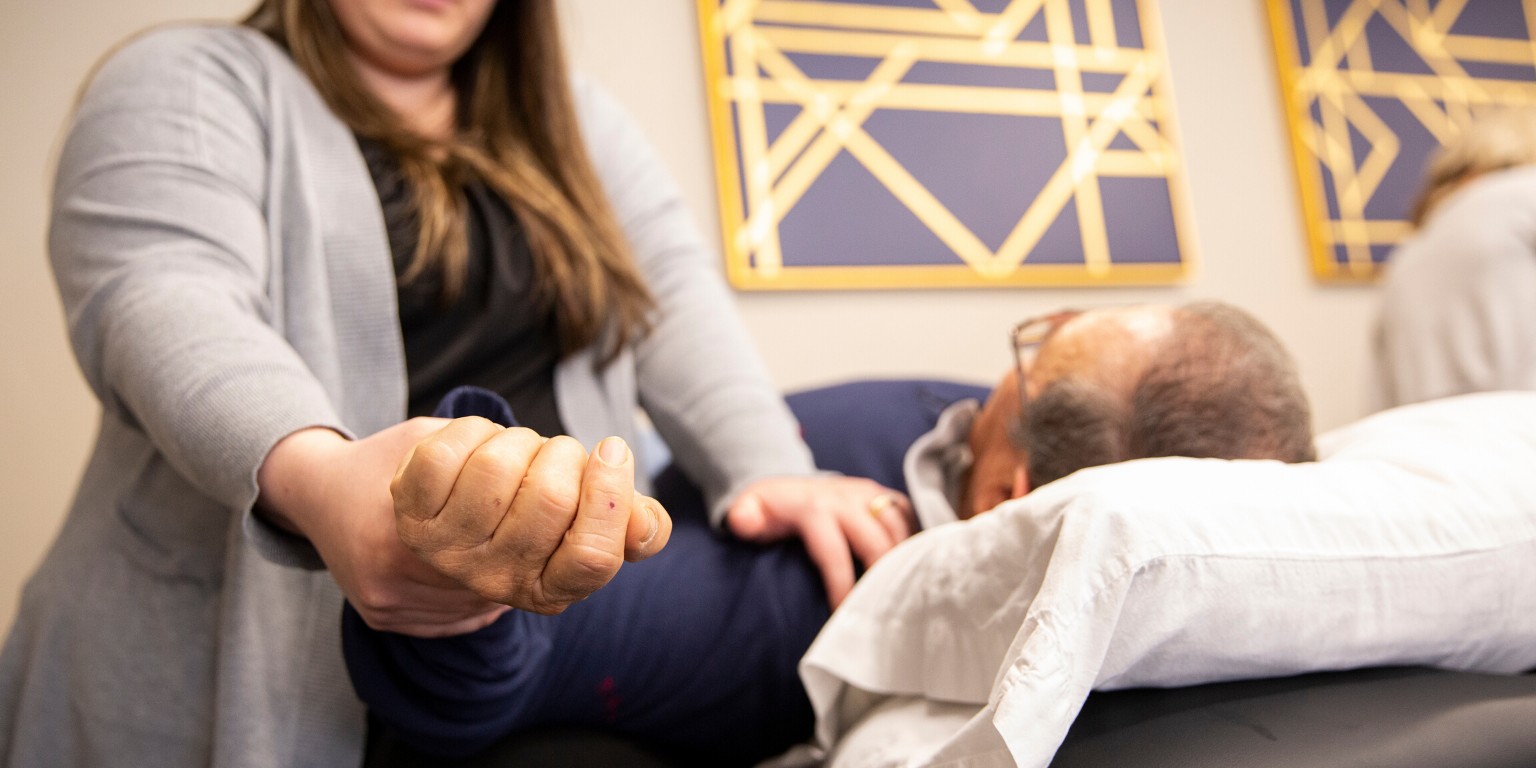
Any daily activity where your arm rotates—lifting, carrying, pushing, or pulling—requires your rotator cuff muscles to work in unison to give you an extended range of motion. It can be painful and discomforting if any of these muscles get torn, and it often leads to surgery. Physical therapy can help in rotator cuff recovery.
The supraspinatus, infraspinatus, teres minor, and subscapularis muscles in the shoulder joint make up what’s commonly known as the rotator cuff. Unlike other muscle groups in the body, the rotator cuff has a unique ability to allow for greater motion while also offering substantial stability in the shoulder joint.
Have you ever realized how much rotator cuff strength and stability are required for everyday tasks like grabbing a gallon of milk from the fridge, lifting your laundry basket, or opening a sliding glass door? These are small examples of simple, functional tasks that your therapist will be knowledgeable about and able to help you do again after surgery.
Recovery times vary, but they can always be reduced with physical therapy. Here’s some more information about rotator cuff injuries and the phases of recovery with physical therapy.
Preparing for Rotator Cuff Surgery
Physical therapy before surgery can aid in a quicker and more complete rotator cuff recovery. With pre-PT at PRO~PT, our licensed physical therapists can guide you through exercises so your body is prepared for the healing process.
Here are some more things to know before surgery.
- Get a support system or someone who can assist with daily activities. Initial movements of the shoulder will be limited and personal grooming habits can be cumbersome. Ask for help.
- Understand that recovery is a process. You will experience some discomfort. Be patient with yourself and allow time to heal.
- Communication with both your doctor and your physical therapy team is vital for full restoration of the shoulder.

Recovery Phase 1 – Healing the Rotator Cuff
Initial recovery consists of pain management, inflammation reduction, and healing of tissues. You may be prescribed ice and medication by your doctor to manage your pain along with other aides. However, you can still start physical therapy.
At this beginning stage of recovery, physical therapy will consist of a protected and restorative range of motion of the shoulder and maintenance of strength and motion in the hand, forearm, and neck.
This phase usually lasts four to six weeks.
Recovery Phase 2 – Regaining Range of Motion + Strength
The second stage of rotator cuff recovery focuses on regaining your shoulder’s range of motion, control, and strength. This stage may be the most uncomfortable while your muscles relearn how to work—physical therapy will progress from passive to active exercises, leading to mild stresses needed for complete tissue repair.
During this phase, you can expect your physical therapy session to include exercises, stretches, and continuation of pain-relieving measures for all joints of the arm. Recovery time in this phase can vary depending on the extent of the surgical repair and can last from six weeks to six months.
Recovery Phase 3 – Return to Everyday Activity
This last phase is focused on a full return to daily activities, sports, and recreational activities. By now, the tissues have appropriately healed and are ready to be stressed. You’ll most likely experience less pain compared to the other phases.
Exercise intensity will be increased, focusing on functional activities such as pushing, pulling, and lifting objects.

Your therapist plays an integral role throughout your rotator cuff recovery process. You can rely on their awareness and knowledge of the guidelines and parameters of the whole recovery process.
Contact one of our clinics today and let your road to recovery begin.







